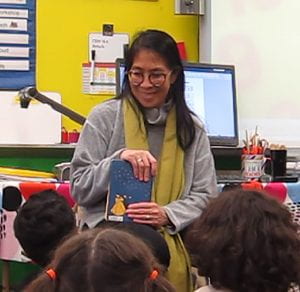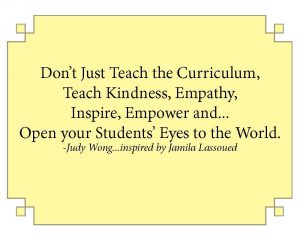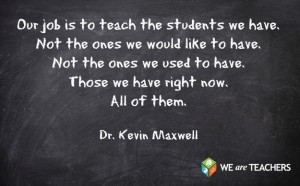For the past two years, I have conducted a very short mini course on the art of storytelling in storybook reading for young learners. This year, I had many more educators who taught older teens and adults. So, I felt it was time to write a blog post about it. I work with older children and adults all the time. There is no reason to think they cannot enjoy and benefit from being read to as well. The considerations are not terribly different and the truth is they love to be read to as much as small children love being read to. Think about how popular audio books are.
Most of the educators, of all ages to all ages, complained that students generally dislike books. Instead of complaining, they should be questioning why. It’s true, I have found that most won’t want to read the books. However, if I choose some subject or genre they like, I can interest them. The key is to start the book as the story reader…complete with the emotions, gestures and voice. The trick is to stop at an exciting point where they want to know what happens next. You would be surprised how quickly they will get into the book and story. Boys are not so different from girls. They have their heroes and their favorite story styles. There are many stories written about sports heroes and music stars and actors/actresses. Some like fantasy so a good fantasy or science fiction story is nice. Some like more realism… so many coming of age stories are good too. Get to know them first!
When dealing with teens or preteens or even young adults, the key is what subjects interest them? What kinds of stories do they like on video? What kinds of games? They should be getting chapter books. It really isn’t necessary to have pictures in the book.
If you are reading one to one, my advice is you don’t necessarily have to read the whole book to them. You can alternate reading parts with them. (That also has the benefit of you being able to see where they are struggling and with what). For this age, you also have to be wary of whether the book is too difficult or too easy. Always start with something easy with an interesting plot and work your way into slightly more difficult ones. Pay attention to…are they struggling because the vocabulary is too advanced or are they struggling because they are trying to read the words with their native linguistic sound system and not English. (Very often I have found that is the reason they are struggling and turned off to books…and once that is pointed out to them and corrected all is well)
If YOU are actively enthusiastically excited about the story you are reading to them, they will be too! How we, as teachers, relate to them is how we are either going to connect or disconnect. Don’t teach! Share! Be there for the children you have not the children you think you should have. That is very important!
 If you want to learn more on how to get your students engaged and motivated to love reading books as well as excited to learn English…
If you want to learn more on how to get your students engaged and motivated to love reading books as well as excited to learn English…
Participants will examine and practice the art of storytelling in storybook reading.
Then create activities using a printed copy or online book.
This course is aimed at all teachers of English to all ages as well as all Teachers of English to Speakers of Other Languages (TESOL).
As a professional storyteller, storybook reader and ESOL teacher, I will share the ‘secret sauce’ needed to become a great storybook reader. Learning the ‘secret sauce‘ will help teachers understand that is doesn’t require them to be professional actors to engage their students in the stories. When a teacher is a great storybook reader, they are engaging, exciting and ultimately will instill a love of reading and books…in those of all ages. It is a way for a teacher to introduce and/or recycle new vocabulary, grammar and meaning to linguistic chunks of language. When the students are excited and engaged, they listen intently (reducing behavioral issues) and have a greater retention of what they heard because they want to listen. They learn sequencing of story and how to connect the verbal sound with the written character symbols, which is very important with children of other languages. Storybook reading is also an excellent way to introduce other academic content, such as social studies and math.
Included in the course:
- Five 40-minute LIVE webinars with Q&A sessions to get all your questions answered
- Access to recordings in case you need to watch again
- Access to important links and guides
- Individual feedback and critiques of work.
- The creation of your own Storybook video.
- Cool badges upon completion of work.
Here is what some former participants had to say:
“I’ve learned a lot from your speech and comments during the course!… I’ve already started to use with my kids and students” – Eugeniya Rubina – Monday, 25 February 2019
“Thanks for your support during this course. You are an active and enthusiastic moderator… I love this course.”– Dai Quang – Sunday, 24 February 2019
“Thank you very much for your guidance and your comments on the video. You made my day….The best part for me was the storytelling part and when I started going through all the online children’s books that moderators shared the links for, it was as if someone had opened a treasure box for me.” – Barbara Krstevski – Wednesday, 6 March 2019
“Thank you so much for your help. I really feel happy now. I have learned many useful things from your course.” – Thi Thu Phuong Tran – Tuesday, 2 April 2019



